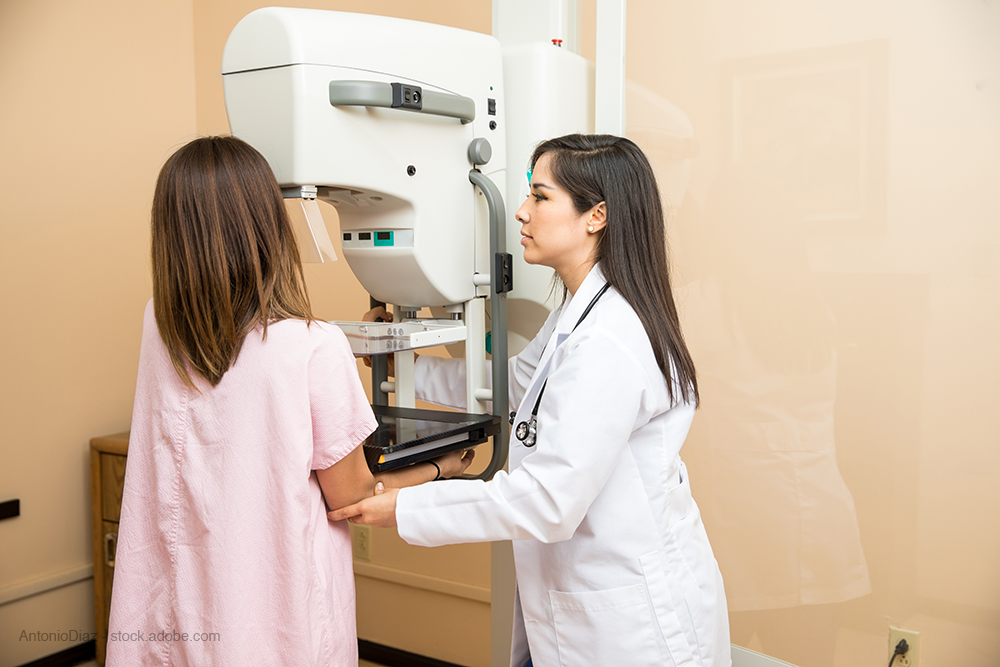Mammography Screening Begins Solid Bounce-Back During COVID-19
More than 75 percent of breast imaging environments are close to re-capturing pre-pandemic imaging volumes.

Mammography screenings are rapidly bouncing back nationwide as the radiology industry begins the pivot toward re-opening its doors for elective procedures.
Nationwide, 78 percent of hospitals and imaging centers that provide mammography services are once again seeing patients for breast cancer screenings, and the volume of exams is on the rise, according to an analysis, released June 9, from a Volpara Solutions, a breast imaging analytics company.
One of the hardest hit areas of diagnostic imaging during the COVID-19 pandemic, mammography volumes declined by nearly 70 percent in many outpatient facilities and hospitals. Recently, however, the tide has started to turn with several academic medical centers and women’s imaging facilities nationwide issuing public calls, encouraging women to return for their annual screenings.
But, this push to re-engage with patients must include an acknowledgement from practice settings that providing imaging services will require changes, said one industry expert.
“During this unprecedented time, we know that nothing is as it used to be,” said Monica Saini, M.D., chief medical officer of Volpara Solutions, a breast imaging analytics company. “Facilities that have seen limited scheduling and significant drops in patient volume must now prepare for higher-than-normal volumes to resolve backlog.”
In fact, based on Volpara’s data, culled from 20 million anonymized mammography images, most sites have already seen exam volumes rebound to within 10 percent of pre-pandemic levels, and a few – approximately 5 percent -- have managed to climb slightly above their previous levels.
To reach this imaging rebound goal, Saini said, imaging environments will need to maintain the delicate balance of quickly scheduling high-risk patients who have postponed their annual screenings while following the new social-distancing requirements in the post-COVID-19 environment. Training and access to data and analytics around imaging performance can help sites better recover from the COVID-19 downturn, she added.
One Practice’s Recovery Strategy
Although the road to re-captured volume levels will look different from practice-to-practice, Oregon Imaging Centers, serving Eugene and Springfield, Ore., constructed a plan that has put the facility on a direct path to recovery. Mammography supervisor Robyn Cole shared the details of their strategy.
Providing information: Using social media, letters, scheduled calls, and on-hold messages, the center informed patients about the practice’s social distancing and disinfection protocols.
Workflow management: Initially, the practice re-opened its doors at 40-percent capacity, she said, to maximize social distancing, as well as the time taken to disinfect equipment. They plan to slowly increase capacity as both patients and staff become more comfortable and knowledgeable about handling screening mammography in the safest ways during this time. The center has also limited the number of places patients visit in the office. For example, exam rooms now have private areas for patients to disrobe rather than maintaining a separate changing room.
Staff Support: A daily staff huddle provides the opportunity to share information and ask questions. In addition, Cole said, it’s an opportunity to bolster staff camaraderie and morale during a time that is filled with uncertainty and risk.
AI-Initiated Recalls After Screening Mammography Demonstrate Higher PPV for Breast Cancer
March 18th 2025While recalls initiated by one of two reviewing radiologists after screening mammography were nearly 10 percent higher than recalls initiated by an AI software, the AI-initiated recalls had an 85 percent higher positive predictive value for breast cancer, according to a new study.